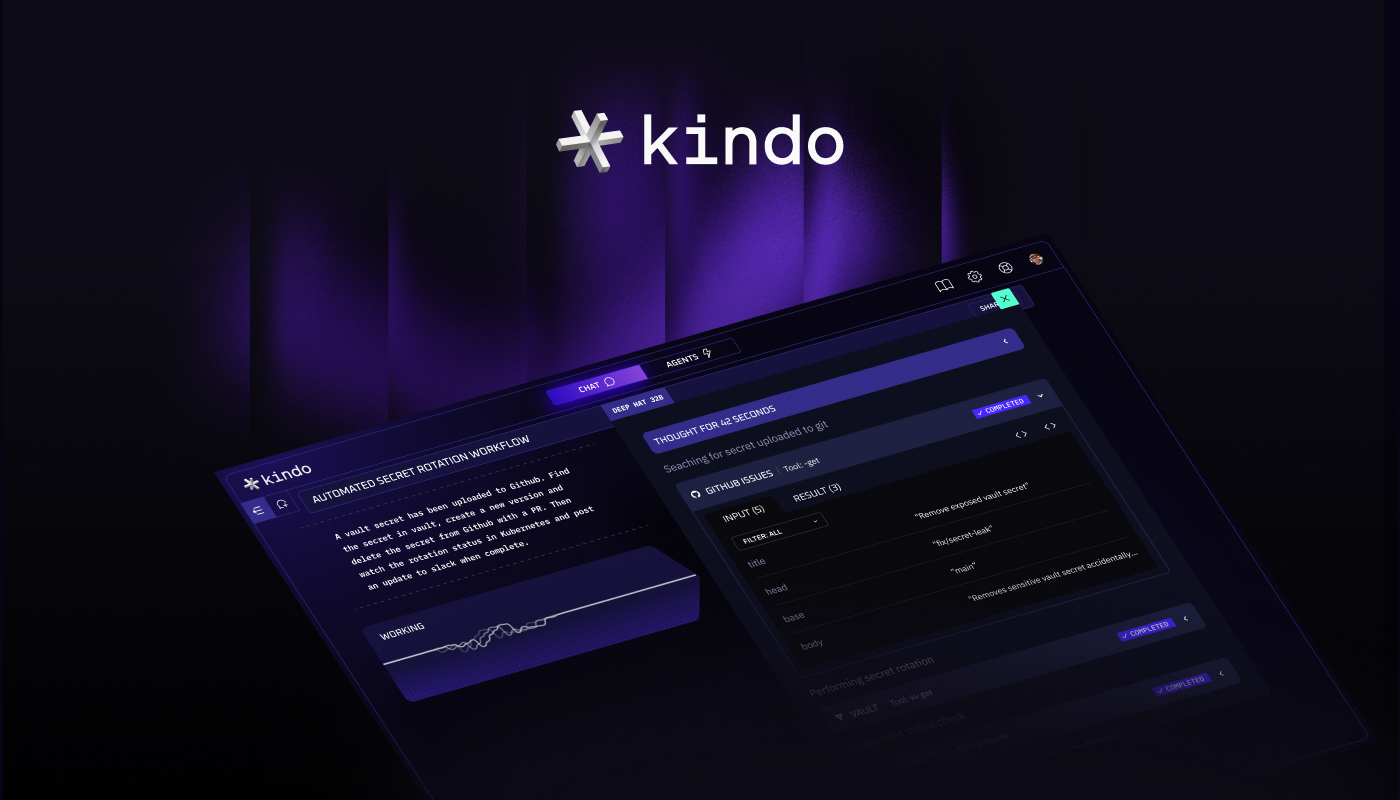
Introducing Chat Actions: One Terminal to Run Every Operation
Today we’re launching Chat Actions, a major step change forward for Kindo and all Technical Ops teams across SecOps, DevOps, and ITOps.
We built the Daily Driver for Technical Operations, the first Integrated Engineer Environment (IEE) for operators who build, run, and verify in one chat. Chat Actions is a core part of that environment. It lets AI work agentically across your operational stack, from ticketing and observability to source control and chat, so you can move from intent to outcome with a single prompt.
It’s powered by Anthropic’s Model Context Protocol (MCP), which is rapidly becoming the standard for how AI agents discover and call services.
Chat Actions and Agents Transform Technical Operations
Chat Actions is the active core of Kindo’s execution model. It is a live loop that evolves step by step in the chat, where operators and AI work together through ambiguous, cross-system investigations that cannot be scripted. You steer while Kindo executes. Everything is recoverable, inspectable, and easy to refine without a drag and drop canvas.
Agents complement this by handling specific, repeatable jobs. They run on schedules or triggers, deliver consistent results, and free teams from rote work. Think of Agents as dependable specialists for known tasks, while Chat Actions is the real-time working session where you and AI handle the messy middle of investigation, correlation, and change.
What You Can Do With Chat Actions
You can describe what you want done and Chat Actions takes it from there. You might ask it to list your open Jira tickets, or paste in a multi-step runbook and let the agent execute it end to end. You can also combine multiple steps in one prompt, asking it to pull recent Jira alerts, fetch logs from Grafana, Elastic, or Splunk, investigate the issue, open the relevant code, propose a fix, open a PR, and send you a summary. The agent executes each step in sequence, so there is no brittle workflow builder or canvas required. It feels like a single conversational workspace for all your Technical Ops work, across SecOps, DevOps, and ITOps, applied directly to real systems.
How it Works
You start by describing the outcome you want, and Kindo does the rest.
- You express intent. Describe the goal or result you want.
- The agent evaluates tools. Kindo provides a curated set of MCP-exposed services and their schemas.
- It plans and executes. On each turn, the agent decides whether to reply or call a tool, selects parameters, and executes with the correct authorization.
- Results feed the loop. Tool responses feed back into the conversation so the agent can adjust and plan the next action.
- It synthesizes the final output. The end result could be a written report, a pull request, or a message in Slack or Teams, each a verifiable artifact of execution.
Resilient and Always On
Real systems are messy, but Chat Actions adapts in real time. When APIs fail, parameters drift, or assumptions change, it adjusts and retries using the context it has built up along the way until the verified result is delivered. And when you want that same reliability running continuously, anything you build in Chat Actions can stay active in the background, triggered by webhooks or schedules. It becomes a steady layer of automation that enriches tickets, triages alerts, correlates logs, and spots anomalies long before they become issues.
Security, Compliance, and Governance by Design
Kindo gives organizations tight control over what agents can do and how they authenticate. Admins decide which services are available, and users connect systems through OAuth or scoped API keys so the agent acts on their behalf. Credentials are stored securely and injected server side into MCP requests rather than exposed in prompts. Kindo-managed MCP servers ensure secure defaults, and admins can set per-tool policies that determine whether actions are blocked, auto-approved, or require confirmation.
Why it Matters
Chat Actions bridges the gap between natural language and real execution. It turns plain language into action that adapts, recovers, and proves its results. For Technical Operations teams, that means less time stitching together workflows and more time solving real problems.
Get a personalized demo to get started.



